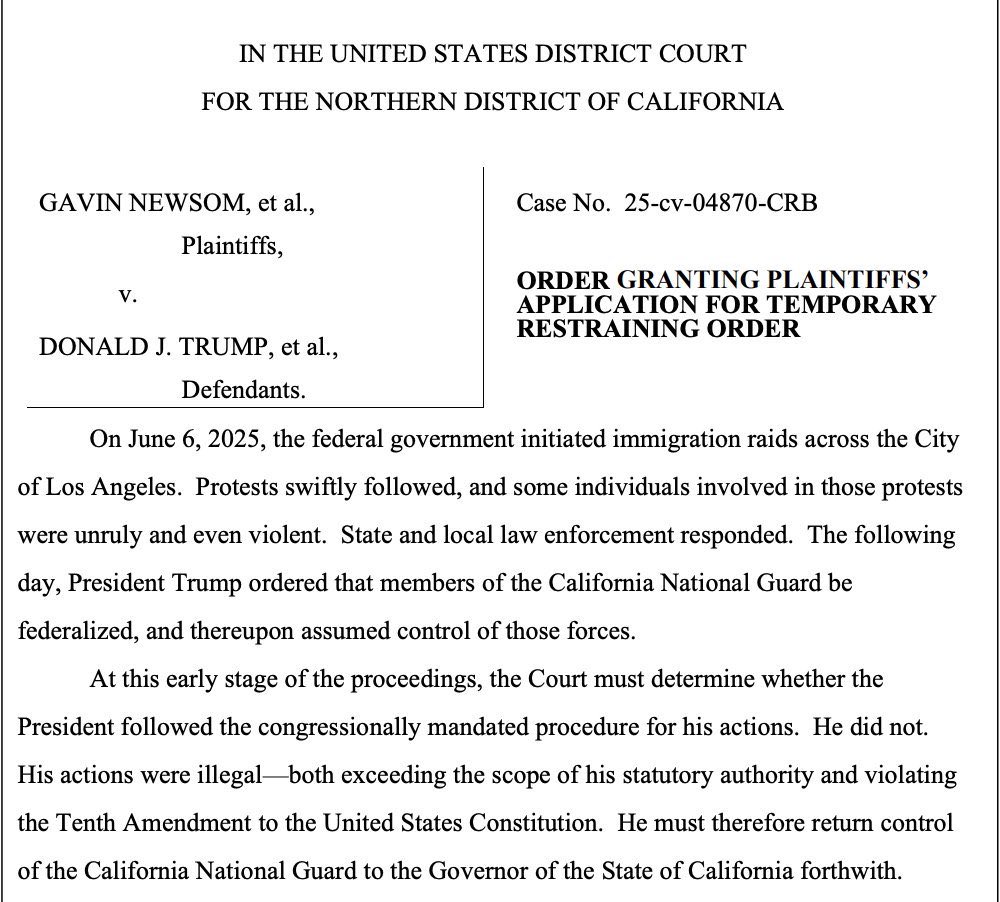President Trump’s controversial order to federalize California’s National Guard has hit a legal snag—and the fallout could reshape the playbook for domestic military use. A federal appeals court has temporarily paused a lower-court ruling that blocked Trump’s move, allowing Guard troops to remain on California streets for now.

The tug-of-war over who controls the National Guard is more than a legal chess match. It’s a question of how far presidential power stretches during peacetime, and how states can push back.
Appeals Court Halts Trump’s National Guard Order
| Insight | Stat |
|---|---|
| Federal troops still active | 700+ Guard troops remain under federal command |
| First use of this kind in decades | Last unilateral federalization: 1965 Watts riots |
| Appeals hearing pending | Set for June 17, 2025 |
This battle isn’t just about who commands the National Guard. It’s about how we define power, protest, and the principles we live by. No matter where you land politically, this is one story to watch closely.
What Happened This Week
On June 12, a federal district judge blocked Trump’s executive order federalizing California’s National Guard. Judge Charles Breyer ruled that the president had overstepped his authority by deploying troops without Governor Gavin Newsom’s consent.
Breyer wrote that while protests in Los Angeles were disruptive, they did not amount to a rebellion or insurrection—the standard required for federal intervention under 10 U.S.C. §252. “That’s what a monarch does,” he stated bluntly, warning of a slippery slope toward unchecked presidential power.
But just hours later, the Ninth Circuit Court of Appeals granted an emergency stay, temporarily suspending the lower court’s block. That means the Guard remains under federal control at least until a full hearing on June 17.
What This Means for Californians
If you live in or near Los Angeles, the Guard’s presence is staying put—for now. Troops are stationed around federal buildings, ICE offices, and detention facilities. According to the White House, they’re protecting infrastructure and federal employees. But to state officials, it looks more like a power grab.
Governor Newsom denounced the move, calling it “an unconstitutional overreach.” California’s attorney general argued that deploying troops without state consent undermines federalism and risks militarizing civilian law enforcement.
There’s also concern about escalation. Leaked documents suggest the administration may activate up to 700 Marines if unrest grows, raising alarms under the Posse Comitatus Act, which limits military involvement in domestic policing.

A Rare Flashpoint in U.S. History
It’s been nearly 60 years since a president last unilaterally federalized the California Guard—during the 1965 Watts riots. This current conflict is stirring deep constitutional debates and sparking fears that we may be entering new legal territory.
“We haven’t seen a confrontation like this since the civil rights era,” said Dr. Emily Harper, a UCLA constitutional law professor. “The courts are being asked to define the limits of executive power in a modern, polarized America.”
As someone who covered protests in 2020 and watched National Guard troops line city streets, I can say firsthand: their presence changes everything. The vibe, the tension, the sense of freedom—it all shifts.
What’s Next?
- June 17, 2025: Ninth Circuit panel will hear oral arguments.
- June 20, 2025: District court will consider a preliminary injunction.
- Beyond June: Either side could appeal to the Supreme Court, setting up a landmark decision.
Depending on what the appellate court decides, the Guard could either return to state control or stay federalized well into the summer.






